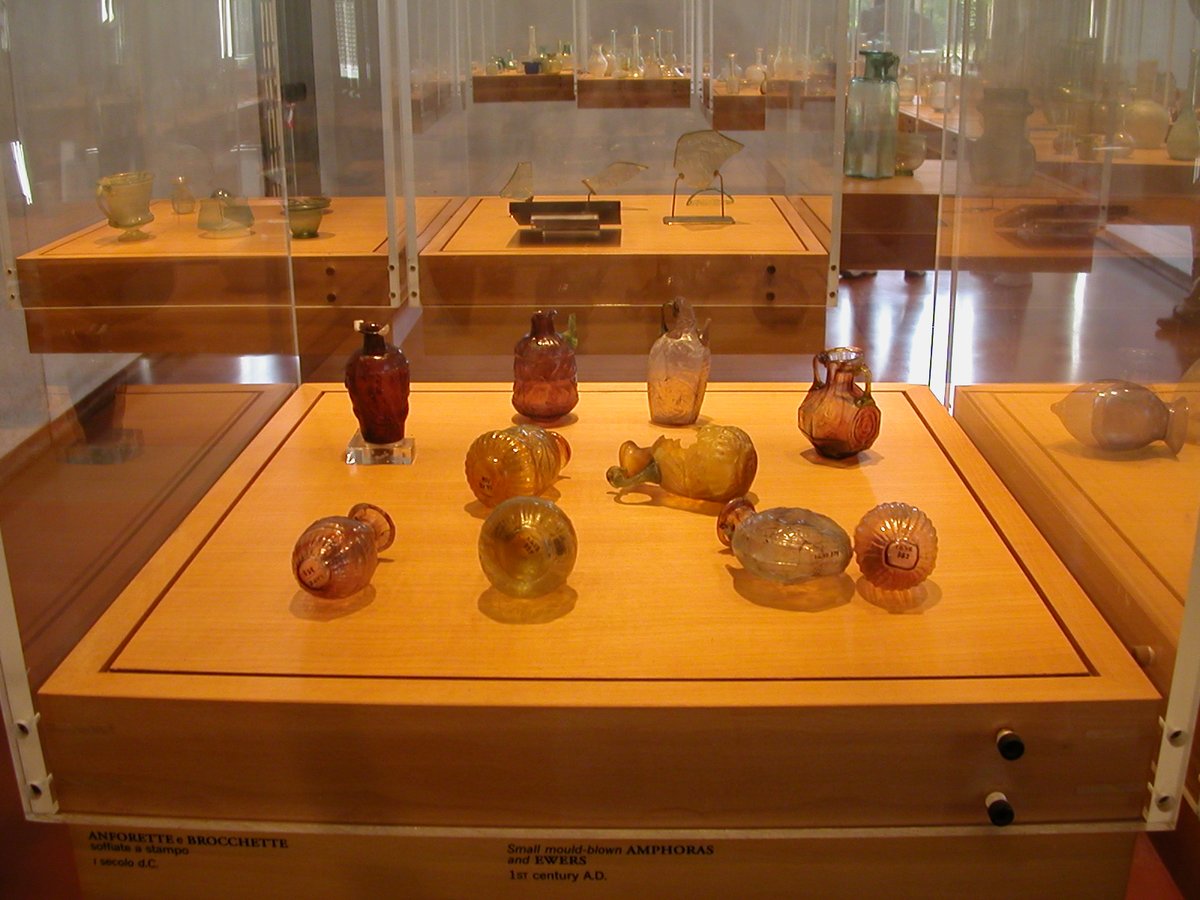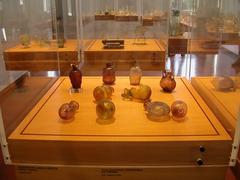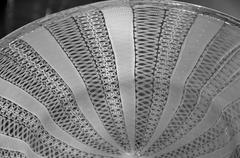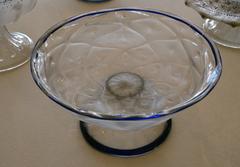
Museo del Vetro: Visiting Hours, Tickets, and Venice Historical Sites
Date: 18/07/2024
Introduction
The Museo del Vetro, located on the picturesque island of Murano, is a cornerstone of Venetian cultural heritage. This museum offers an in-depth exploration of the exquisite tradition of glassmaking that has defined Murano for centuries. The island of Murano, located in the Venetian lagoon, became synonymous with glassmaking excellence as early as the 13th century. This legacy is meticulously preserved and showcased at the Museo del Vetro, housed in the historic Palazzo Giustinian. Visitors can journey through centuries of innovation, from ancient Roman glass to contemporary masterpieces, witnessing the evolution of techniques and styles that have made Murano glass a symbol of Venetian artistry and ingenuity. For those planning a visit, this guide provides comprehensive information on visiting hours, ticket prices, travel tips, and nearby attractions, ensuring a memorable experience (Discover the History and Significance of Murano Glassmaking).
Table of Contents
- Introduction
- Discover the History and Significance of Murano Glassmaking
- Museo del Vetro
- Visitor Information
- Tips for a Memorable Experience
- FAQ
- Conclusion
Discover the History and Significance of Murano Glassmaking
Murano, a group of islands in the Venetian lagoon, is synonymous with exquisite glassmaking, a tradition deeply woven into its history and identity. This article explores the rich history and significance of Murano glassmaking, provides practical visitor information including visiting hours and ticket prices, and highlights nearby attractions and travel tips to ensure you have a memorable visit.
The Rise of Murano as a Glassmaking Center
In 1291, the Venetian Republic, fearing the risk of fires from glass furnaces, ordered all glassmakers to relocate their workshops to Murano. This seemingly restrictive decree proved to be a blessing in disguise. Isolated on the island, Murano’s glassmakers were able to safeguard their trade secrets, leading to unparalleled innovation and the development of revolutionary techniques.
The Golden Age of Murano Glass
The 15th and 16th centuries marked a golden age for Murano glass. Masters perfected techniques like cristallo, producing exceptionally clear glass, and enamelling, adorning glass with vibrant colors. Murano glass became highly sought after throughout Europe and beyond, gracing the tables of royalty and nobility. The Venetian Republic, recognizing the economic and artistic significance of this craft, bestowed numerous privileges upon Murano’s glassmakers, including the right to bear swords and immunity from prosecution.
Challenges and Evolution
Despite its prestige, Murano’s glass industry faced challenges. The fall of the Venetian Republic in the late 18th century led to a decline in production. However, Murano’s artisans persevered, and the 19th century saw a revival, fueled by renewed interest in Venetian traditions and the emergence of new styles like the intricate murrine glass.
Murano Glass Today
Today, Murano remains a vibrant center for glassmaking, attracting artists and visitors from around the globe. While respecting traditional techniques, contemporary Murano glassmakers continue to push boundaries, experimenting with new forms, colors, and applications. The legacy of Murano glassmaking is not merely about beautiful objects; it’s a testament to centuries of artistic ingenuity, cultural exchange, and unwavering dedication to a craft passed down through generations.
Museo del Vetro
The Museo del Vetro, housed in the former Palazzo Giustinian, is a must-visit for anyone exploring Venice’s historical sites. This museum boasts a remarkable collection spanning centuries of Venetian glassmaking. The museum’s layout takes visitors on a chronological journey, showcasing the evolution of this exquisite art form.
Ancient and Medieval Glass (1st - 15th Century)
The museum’s earliest pieces date back to the Roman era, illustrating the long history of glassmaking in the region. These ancient artifacts, including cups, bowls, and decorative elements, provide a glimpse into the techniques and styles prevalent during this period. The collection also features glass from the Byzantine era, highlighting the influence of Eastern aesthetics on Venetian glassmaking.
Renaissance Glass (16th Century)
The Renaissance marked a golden age for Venetian glassmaking, and the museum’s collection from this period is truly exceptional. Visitors can marvel at the intricate designs and vibrant colors of Renaissance glass, with highlights including:
- Goblet with Enamel and Gilding (circa 1550-1600): This exquisite goblet exemplifies the Renaissance mastery of enamel and gilding techniques. The clear glass is adorned with delicate floral patterns and intricate gold details, showcasing the opulence of the era. (Source - Museo del Vetro)
- Covered Bowl with Winged Lion (circa 1500): This bowl features the iconic winged lion of Venice, a symbol of the city’s power and prestige. The use of vibrant enamels and the intricate details of the lion demonstrate the high level of craftsmanship achieved during this period.
Baroque Glass (17th Century)
The Baroque period saw a shift towards more elaborate and dramatic designs in Venetian glassmaking. The museum’s collection from this era reflects this trend, with pieces characterized by:
- Chandelier with Polychrome Decoration (circa 1650-1700): This magnificent chandelier is a testament to the Baroque love of grandeur. The intricate glasswork, adorned with polychrome decoration, creates a stunning visual spectacle.
- Mirror with Murano Glass Frame (circa 1600-1650): This mirror showcases the skill of Murano artisans in creating elaborate frames from Murano glass. The frame features a combination of clear and colored glass, twisted and shaped into intricate patterns.
18th and 19th Century Glass
The 18th and 19th centuries witnessed the continued evolution of Venetian glassmaking, with influences from various artistic movements. The museum’s collection from this period includes:
- Chandelier in the Style of Louis XV (circa 1750-1770): This elegant chandelier reflects the influence of French Rococo style on Venetian glassmaking. The delicate glasswork and floral motifs create a sense of lightness and grace.
- Vase in the Style of Bohemian Glass (circa 1850-1900): This vase demonstrates the influence of Bohemian glassmaking techniques on Murano. The use of colored glass and intricate engraving creates a rich and decorative effect.
20th Century Glass and Beyond
The 20th century saw a resurgence of creativity in Venetian glassmaking, with artists exploring new forms, techniques, and expressions. The museum’s collection from this period showcases the diversity and innovation of modern Murano glass, with highlights including:
- “Sommerso” Vase by Flavio Poli (circa 1950): This vase exemplifies the “Sommerso” technique, where layers of colored glass are fused together to create a multi-layered effect. Poli’s work is characterized by its elegant forms and vibrant colors.
- Sculpture by Lino Tagliapietra (circa 1990): This stunning sculpture showcases Tagliapietra’s mastery of glassblowing techniques. The fluid forms and delicate details highlight the versatility and artistic potential of glass as a medium.
Contemporary Glass
The Museo del Vetro continues to acquire contemporary works, ensuring that the collection reflects the ongoing evolution of Venetian glassmaking. Visitors can explore the latest trends and innovations in glass art, with pieces by both established and emerging artists.
The Glassmaking Process
In addition to the stunning glass collections, the Museo del Vetro offers insights into the fascinating process of glassmaking. Exhibits showcase the tools, techniques, and materials used by Murano artisans throughout history. Visitors can gain a deeper appreciation for the skill and artistry involved in creating these exquisite objects.
Visitor Information
Visiting Hours
The Museo del Vetro is open daily from 10:00 AM to 5:00 PM. Please check the official website for any changes in hours or special holiday schedules.
Tickets
General admission tickets are €10 for adults, €7.50 for students and seniors, and free for children under 12. Tickets can be purchased online or at the museum entrance.
Travel Tips
Murano is accessible by vaporetto (water bus) from Venice. The journey takes about 20 minutes. Consider purchasing a day pass for unlimited travel within the lagoon. It’s advisable to wear comfortable shoes as you will be walking on cobblestone streets.
Nearby Attractions
While in Murano, don’t miss the chance to explore nearby attractions such as the stunning Basilica dei Santi Maria e Donato, known for its beautiful mosaics, and the charming island of Burano, famous for its colorful houses and lace-making tradition.
Special Events and Guided Tours
Murano hosts various events throughout the year, including glassmaking festivals and art exhibitions. Guided tours are available and offer a deeper insight into the history and techniques of Murano glassmaking.
Photographic Spots
Capture the beauty of Murano by visiting popular photographic spots such as the Grand Canal of Murano, the lighthouse, and the many quaint bridges and alleyways that crisscross the island.
Tips for a Memorable Experience
Purchase Tickets in Advance
Especially during peak season, consider purchasing your tickets online to avoid potential queues at the museum entrance.
Combine with Other Murano Activities
Make the most of your trip to Murano by combining your museum visit with other activities like a glassblowing demonstration, workshop, or a leisurely stroll through the island’s charming streets.
Learn Basic Italian Phrases
While English is widely spoken in tourist areas, learning a few basic Italian phrases can enhance your interactions with locals and enrich your overall experience.
Dress Comfortably
Murano can be crowded, especially during peak season. Wear comfortable shoes and dress in layers to accommodate varying temperatures.
Embrace the Unexpected
Venice and its surrounding islands are full of surprises. Be open to unexpected discoveries and embrace the unique charm of this historic and captivating city.
FAQ
What are the visiting hours for Murano Glass workshops?
Most workshops are open from 10:00 AM to 5:00 PM, but hours can vary.
How much are tickets for the Museo del Vetro?
Tickets cost around €10 for adults, with discounts for children, students, and seniors.
How do I get to Murano from Venice?
Murano is accessible by vaporetto, with a journey time of about 20 minutes. A day pass for the vaporetto is recommended for unlimited travel within the lagoon.
Conclusion
A visit to the Museo del Vetro offers an unparalleled opportunity to immerse oneself in the rich history and artistry of Murano glassmaking. From its ancient origins to contemporary innovations, the museum’s extensive collection highlights the enduring significance of this craft. The Museo del Vetro not only showcases beautiful objects but also tells the story of the artisans who have dedicated their lives to mastering this intricate art form. By exploring the museum, engaging with interactive displays, and participating in guided tours, visitors gain a deeper appreciation for the cultural and economic impact of Murano glass. Beyond the museum, the island of Murano itself, with its charming streets and vibrant glass studios, offers a perfect setting for further exploration. Whether you are an art enthusiast, a history buff, or a curious traveler, the Museo del Vetro provides a captivating and educational experience that celebrates the legacy of Venetian glassmaking (Museo del Vetro - Visiting Hours, Tickets, and a Journey Through Venetian Glassmaking).















































































































